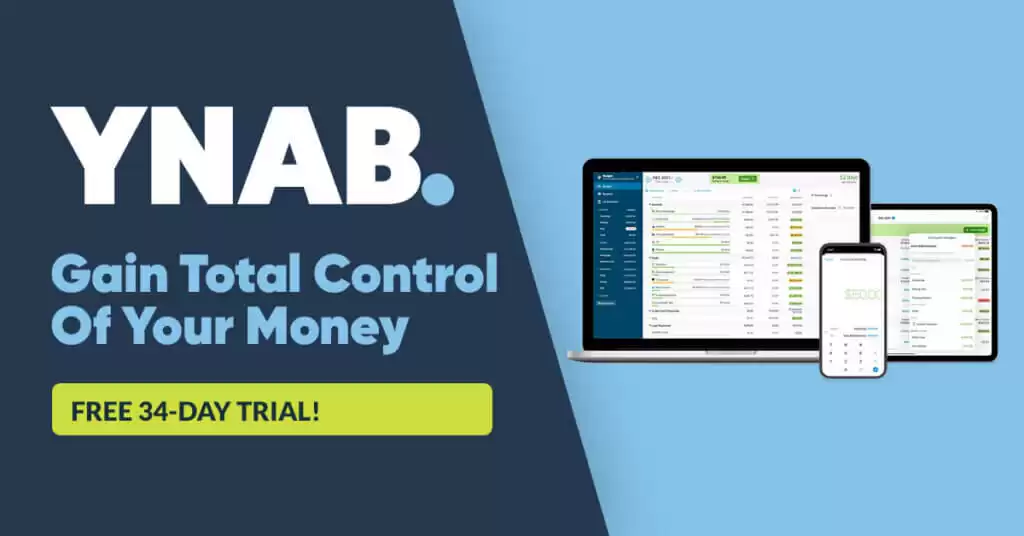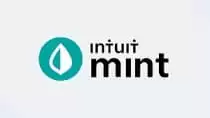YNAB vs Mint: Which Budgeting App is better for You?
Inside: Are you looking for an affordable budgeting app that offers a range of features? YNAB may be the perfect choice for you! This guide will compare YNAB vs Mint, highlight their key features, and help you decide which is best for your needs.
Are you trying to make a choice between Mint and YNAB for managing your financials?
Here’s a comprehensive overview that would definitely point you in the right direction.
Both Mint and YNAB have proven to be efficient and reliable online budgeting tools, but their offering varies in some aspects.
STOP READING… Mint just announced they are shutting down.
You can read everything you need to know about Intuit’s Mint App shutting down.
While Mint shines with its free budgeting tools and comprehensive credit score and report management capabilities, YNAB stands distinguished with its robust features and specialist credit management options, making it worth its fee for some users.
Herein, we dive into the similarities, differences, and unique functionalities of both platforms to help you decide which one best aligns with your financial management needs and lifestyle.
As a finance expert, I’ve seen both YNAB and Mint apps work wonders for different people.

In my opinion, both have unique value. Novices may find Mint’s overview helpful, while more determined budgeters might prefer YNAB.
Remember, it’s perfectly fine to use both if it aids your long-term money management.
This post may contain affiliate links, which helps us to continue providing relevant content and we receive a small commission at no cost to you. As an Amazon Associate, I earn from qualifying purchases. Please read the full disclosure here.
What is YNAB?
YNAB is a budgeting software I’ve utilized that provides detailed financial tracking and education for effective money management. Also, known as you need a budget app.
Adhering to its unique Four Simple Rules for Successful Budgeting, every dollar is assigned a specific task. YNAB operates via an online account or a mobile app, involving color codes and features like ‘The Inspector’ for efficient budget overview. However, it’s important to note that YNAB caters only to the zero budgeting style and charges a monthly subscription fee.
This is a great budgeting method as it gives you a cash flow budget plan for your money.
Overall, YNAB helped me gain control over my finances by setting realistic goals, getting one month ahead on bills, and focusing on each dollar’s purpose.
What is Mint?

Mint is a free, all-in-one finance platform owned by Intuit that can be used to easily manage my money.
It links all accounts in one place for easy tracking and includes features such as budgeting, credit score monitoring, and bill tracking.
For instance, Mint categorizes transactions, monitors changes in my credit score, and sets up budgetary limits.
With over 30 million users, Mint is a leading free tool in personal finance management.
A step up from Mint would be Intuit’s Quicken platform or Simplifi budget app.

Comparison of YNAB and Mint Apps
Mint is a comprehensive, free budgeting app, that provides an overall view of your finances. It links to your accounts, tracking and categorizing spending, while also offering savings tips. Conversely, YNAB, a paid app, focuses on giving users control over budgeting. It will link to your accounts and encourage a proactive role in handling finances.
These are two of the budget apps available on the market.
In my opinion, if you’re seeking an easy-to-use app offering a holistic view of your spending and savings, Mint is a perfect choice. However, if you’re looking for a stringent budget management system with more control, YNAB is worth the investment.
Kristy @ Money BLiss
1. YNAB vs Mint: Features
YNAB and Mint are both renowned budgeting apps, but they possess some notable differences.
- While both support account linking, goal setting, and spending tracking, Mint pulls ahead with its investment and credit score tracking features.
- YNAB distinguishes itself with a forward-thinking, zero-based budgeting strategy and benefits like manually adding transactions. Think budget by paycheck style.
- From the ease of use standpoint, both are equally user-friendly.
2. YNAB vs Mint: Budgeting Snapshot
YNAB offers a rigorous, manually updated budgeting snapshot that employs a zero-based budgeting philosophy. This feature provides a detailed outlook, encouraging users to assign every dollar a job.
On the other hand, Mint has an automated tracking system that offers an all-in-one snapshot of all financial accounts and spending categories.
Mint integrates your accounts, offering useful tips and an overview of your finances. Conversely, YNAB requires a manual categorization of income and expenses but affords more budgeting control. Similar to using the ideal household budget percentages.
The budgeting snapshot in Mint is best suitable for individuals seeking a hands-off approach, while YNAB is ideal for those who prefer an in-depth, hands-on budget strategy.
A great way to move digital from your budget binder with envelopes.
3. YNAB vs Mint: Goal Setting

The Goal Tracking feature in YNAB allows users to set various budgeting goals such as saving targeted amounts of money or conversely working towards getting out of credit card debt. This in-built functionality provides a structured pathway for users to stick to and pursue their financial objectives effectively.
Your interaction with your YNAB account through the goal-tracking tool ties back to YNAB’s four Simple Rules for Successful Budgeting, aiding in fiscal responsibility.
This innovative feature assists individuals in staying focused on their planned budgets, ensuring they are empowered to make strides toward their unique financial goals.
Mint however doesn’t offer this feature.
4. YNAB vs Mint: Interface
While YNAB is ideal for meticulous budgeters prioritizing forward planning, Mint is perfect for those seeking an easy-to-use, comprehensive glimpse of their financial standing.
- YNAB’s interface is focused on budgeting, featuring tools for expense tracking, goal setting, and manual transaction input.
- In contrast, Mint offers a comprehensive overview of your financial health, automatically categorizing expenses, tracking investments, and offering set-up alerts.
5. YNAB vs Mint: Categorization
Mint offers automated categorization of transactions, which eases the process of budgeting for the user. However, it doesn’t allow the removal of default categories, and the addition of new ones might take time due to server communication.
On the other hand, YNAB allows a deeper level of categorization, with an option to visually nest categories, and more effortless editing of these categories.
In my opinion, Mint’s categorization feature suits a casual budgeter looking for automation, while YNAB would be ideal for those desiring granular control over their personal budget categories.
6. YNAB vs Mint: Mobile App & Cross Platforms
Both YNAB and Mint offer comprehensive personal finance management via mobile apps, compatible with iOS, Android, and desktops.
YNAB stands out with its Apple Watch integrations and a slightly better syncing experience based on user reviews on Trustpilot1.
YNAB also syncs across a desktop app as well.
7. YNAB vs Mint: Alerts
Mint provides a wide selection of alerts, including low balances, upcoming bill payments, over-budget warnings, ATM fees, and unusual expenditure notifications.
These comprehensive alerts from Mint give a more thorough financial pulse check but can be overwhelming for some.
On the other hand, YNAB recently added live push notifications based on your preferences.
8. YNAB vs Mint: Syncing
YNAB leads the game when it comes to synchronization, outshining Mint. While Mint supports numerous banks, issues with synchronization often lead to grievances among its users. YNAB, on the other hand, offers smoother syncing and fewer complaints, proving its superiority.
Many users find YNAB’s syncing consistent and reliable.
- Personally, I believe that if you prioritize seamless syncing and don’t mind spending $14.99 a month, YNAB becomes a clear choice.
- However, if you’re okay with potential sync issues and prefer free usage, Mint could be more suitable.
It’s crucial to pick according to your priorities and needs.
9. YNAB vs Mint: Savings Accounts

Mint offers automatic expenditure tracking and classifies my spending into categories, providing a comprehensive view of where my money is going.
YNAB, on the other hand, empowers me to manually budget my net income each month, ensuring I don’t overspend and promoting a proactive approach to saving.
10. YNAB vs Mint: Investment Tracker
Mint offers investment tracking features, allowing users to view their investment portfolio and monitor performance.
In contrast, YNAB lacks this feature, not providing any investment tracking at all.
As a user, if you highly prioritize tracking investments in one place, you may lean towards using Mint. Conversely, if investment tracking is less important to you than budgeting, YNAB’s strong budgeting emphasis, despite its lack of investment tracking, makes it a considerable option.
11. YNAB vs Mint: Learning Curve with your Finances
YNAB has a steeper learning curve, necessitating a proactive approach to money management by assigning every dollar a purpose. Thus, YNAB gives you a free 34-day free trial to understand how to use the app.
Mint, however, requires minimal user input post-account linkage and auto-categorizes your spending. For sheer ease of use, Mint might appeal to novices looking for automated budget tracking.
On the other hand, users wishing to take charge of their finances might appreciate YNAB’s proactive, behavior-altering approach. Despite having a steeper learning curve, YNAB offers an abundance of online tutorials and customer support, making the learning process manageable and rewarding.
The same is true when you are learning to use the biweekly budget template.
12. YNAB vs. Mint: Data Security

Data security is a paramount concern when utilizing online budgeting apps as they deal with sensitive financial information.
Apps like YNAB and Mint incorporate stringent security measures to protect user data.
- For instance, YNAB uses a one-way salted and hashed password system and data encryption.
- Mint, on the other hand, employs two-factor authentication and a Touch ID sensor for iOS for enhanced security.
Nonetheless, it’s important to note that while these apps provide bank-level security, Mint does anonymize and sell user data to advertisers.
13. YNAB vs Mint: Advertising
YNAB derives income primarily from subscription fees offering an ad-free experience, holding a straightforward revenue model. In contrast, Mint generates income through affiliate commissions by advertising financial products to users and selling anonymized user data!
Mint, contrastingly, is a free app reliant on ads and sells anonymized user data for third-party advertisements.
From my perspective, if avoiding ads and preserving data privacy matters to you, YNAB’s approach might be more appealing. However, if you prefer a free service and don’t mind the ads, Mint would be suitable.
14. YNAB vs Mint: Customer Support
When evaluating the customer support of Mint and YNAB, it’s evident that YNAB takes a more well-rounded approach.
With a commitment to respond to email queries within 24 hours, YNAB also provides educational resources such as the “get started” class, their blog, and user forums. This is in contrast to Mint, which, despite offering live chat support, has had reports of slow response times.
Both platforms offer online training materials, but YNAB seems more comprehensive and responsive in its support-providing role. Overall, YNAB appears to be the preferred choice when customer support is a primary consideration.
15. YNAB vs Mint: Cost
Mint is a free, ad-supported budgeting app while YNAB is a subscription-based model of $14.99 monthly or $99 annually.
- However, for individuals seeking in-depth surgical budgeting capabilities without concerns for associated costs, YNAB’s price might represent a great investment.
- Given the claimed average user saves $600 in two months and $6,000 in the first year.2
For those budgeting with minimal funds, the free price tag of Mint might be more attractive, but you are giving away your privacy.
Pros and Cons of YNAB vs Mint
|
|
|
|
|
$14.99 monthly or $99 annually
|
Free to Use, But Served Ads and They Sell your Data.
|
|
|
- YNAB offers a comprehensive approach to budgeting, helping you plan monthly budgets based on your income. It also offers expert advice, making it suitable for those who require an in-depth, forward-thinking budgeting strategy.
- YNAB's superior synchronization skills make it the winner in this area. YNAB has extra features like goal setting for budgeting, shared budgeting tools for partners
- YNAB provides an option to manually add and upload transactions from accounts each month, a feature that Mint does not offer.
- YNAB prioritizes user privacy, requires an opt-in to access budgeting data, and doesn't sell user data.
- Lack of investment tracking feature
- Customer service is only accessible via email, which might not be ideal for urgent queries
- Steep learning curve which requires time and effort to navigate through.
- Offers a 100% money-back guarantee at any point of use.
- Does not require credit card information to signup, a departure from the usual free trial model)
- Mint offers a centralized platform for monitoring all your financial accounts, including credit cards and bank accounts.
- It provides a complete financial overview at a glance through the auto-population of data from linked accounts.
- Mint's features include detailed reporting in multiple categories, free credit score access, and exceptional compatibility with financial institutions.
- The service is free, funded by ads and offers, and it best serves those who wish to categorize spending, budget their monthly expenses, and access all financial details from one place.
- Mint, which belongs to Intuit, automatically accesses all data and sells the data. Thus, an intrusion of privacy.
- Budgeting feature doesn't enable effective planning of future expenses.
- Mint suffers from more technical glitches and synchronization issues.
- Ads included in the free version of Mint can be obtrusive and may deter users.
Who should use YNAB?
From my experience, YNAB works best for those who are ready to seriously manage their money and spend some time learning a new budgeting approach. Its use of the zero-based budgeting system not only makes you more intentional with your money but also demands active participation in decision-making.
YNAB’s ability to link to your accounts and its multitude of educational resources available are admirable features I’ve used.
YNAB offers detailed financial tracking and built-in education, but its monthly subscription fee and suitability for a specific budgeting style may be limiting for some.
However, it comes with a monthly or annual cost – a worthy investment for those searching for a robust, hands-on, and future-focused budgeting tool. Most YNAB budgets agree they save multiples of the subscription cost.
However, it can be less suitable for those not ready for a hands-on approach or those sensitive to subscription pricing.
Who should use Mint?
On the other hand, Mint is an all-in-one app that automatically tracks and categorizes your spending.
Based on my experience, Mint is an excellent tool for novice-level budgeters seeking to track their expenses, set budgets, and manage their finances with ease. This budgeting app allows a comprehensive view of all your financial accounts, which differentiates it from YNAB.
If you’re comfortable seeing ads and not needing investing features, Mint could be a perfect fit. However, if you require the ability to assign multiple savings goals to one account or a bill pay feature, YNAB may be more suitable for you.
Therefore, Mint is most applicable for beginners seeking a free and user-friendly budgeting platform.
YNAB vs. Mint: Which is better for you?

As a content writer and budgeting app user, I find Mint and YNAB are unique in their offerings.
Mint automatically tracks and categorizes your spending, providing an intuitive picture of where your money goes, ideal for beginners in budgeting.
In contrast, YNAB promotes a proactive approach, helping to set and monitor budgets, hence perfect for those with specific financial goals. To sum up, Mint offers a simplified, passive overview, while YNAB is excellent for a detailed, forward-thinking approach to managing finances.
Personal preferences and needs really influence the choice here. Do you need intricate control and don’t mind paying a fee? YNAB might be your fit. Prefer automation and want a free option? Mint could work for you.
YNAB vs Mint: Verdict
As an expert in personal finance tools, I’ve explored both YNAB and Mint.
In my experience, there are distinct differences between YNAB and Mint. For my readers, I recommend YNAB.
YNAB, with its laser-focused approach towards budgeting, is a boon for individuals needing extensive assistance in the budgeting arena. You learn to assign every dollar with intention, thereby gaining a higher degree of control over your finances.
This proactive approach will help you to be financially independent faster.
To sum up, if detailed budgeting is your priority, choose YNAB.
Enjoy guilt-free spending and effortless saving with a friendly, flexible method for managing your finances.
- Comprehensive approach to budgeting, helping you plan monthly budgets based on your income.
- Offers expert advice, making it suitable for those who require an in-depth, forward-thinking budgeting strategy.
- Superior synchronization skills make it the winner in this area.
- YNAB has extra features like goal setting for budgeting, shared budgeting tools for partners.
- Option to manually add and upload transactions from accounts each month.
- YNAB prioritizes user privacy.
However, for a more holistic financial insight with less emphasis on budgeting, Mint might be the better choice.
Now, make sure to check out our Quicken Review.
Source
- TrustPilot. “YNAB Review.” https://www.trustpilot.com/review/ynab.com. Accessed on September 27, 2023.
- YNAB. “YNAB Pricing.” https://www.ynab.com/pricing/. Accessed on September 27, 2023.
Did the post resonate with you?
More importantly, did I answer the questions you have about this topic? Let me know in the comments if I can help in some other way!
Your comments are not just welcomed; they’re an integral part of our community. Let’s continue the conversation and explore how these ideas align with your journey towards Money Bliss.





